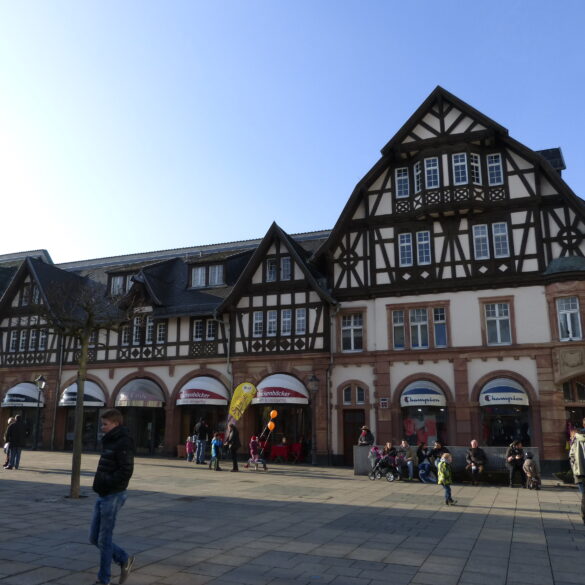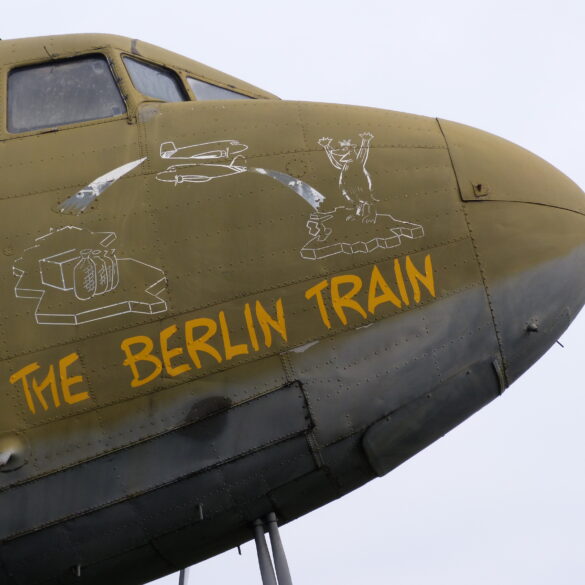Gernsheim is a small town on the Rhine river that started out as a small Roman fishing village about two thousand years ago.
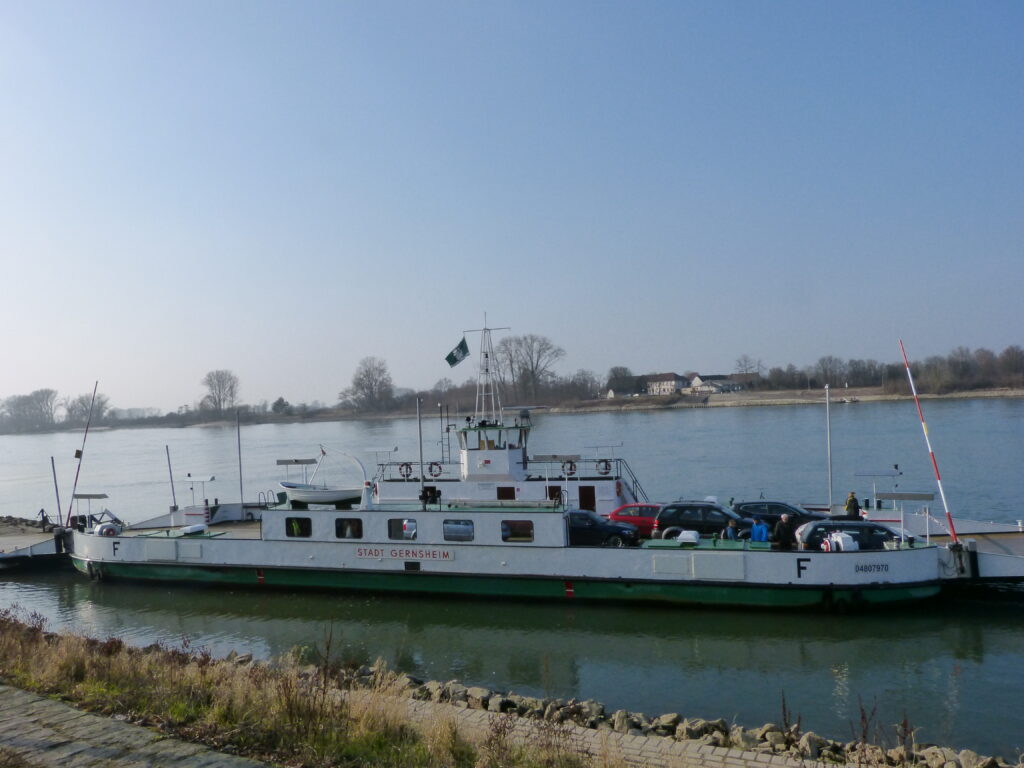
Sean found out about Gernsheim last February when we were looking for something to do one weekend.
He found a bad translation online of a walking tour, and off we went one Sunday to explore.
At the start of the walk we ended up in a small park.
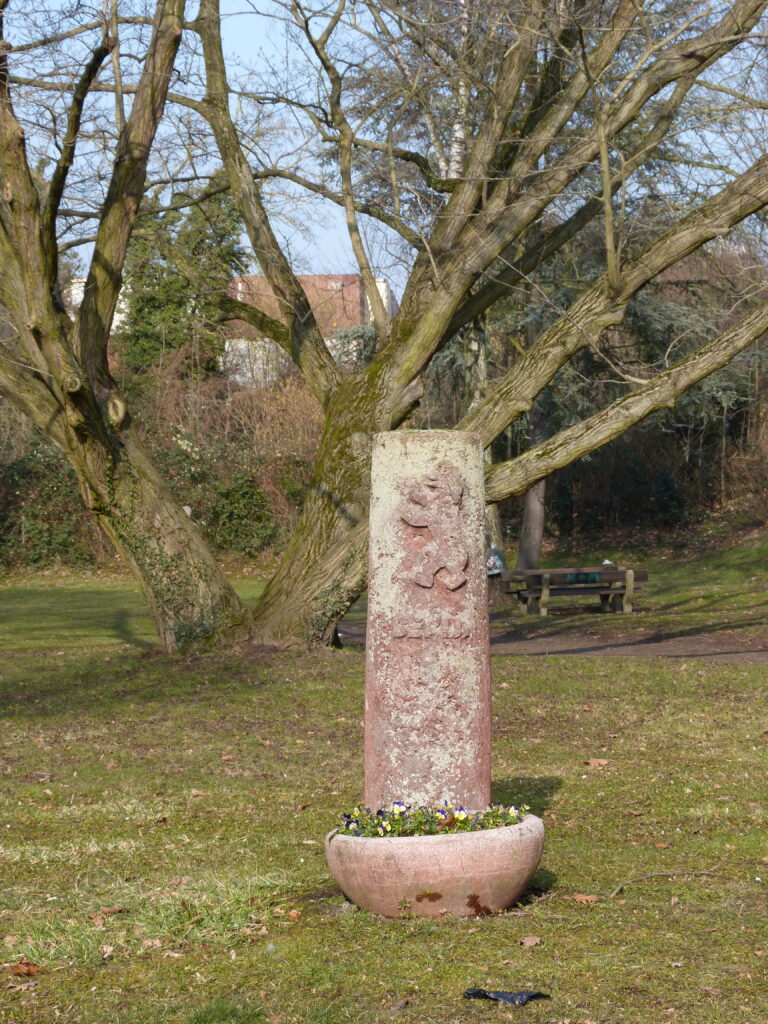
You may recognize that little bear as the symbol of Berlin.
It commemorates the Uprising of 1953 in East Germany.
I was not aware of that historical event prior to visiting Gernsheim. Visiting these little towns is really very informative.
The uprising started with striking construction workers in East Berlin and there ended up being strikes and protests in hundreds of towns in East Germany.
Soviet troops tried to suppress the protests and at least 55 people were killed.
Near that monument is another one.
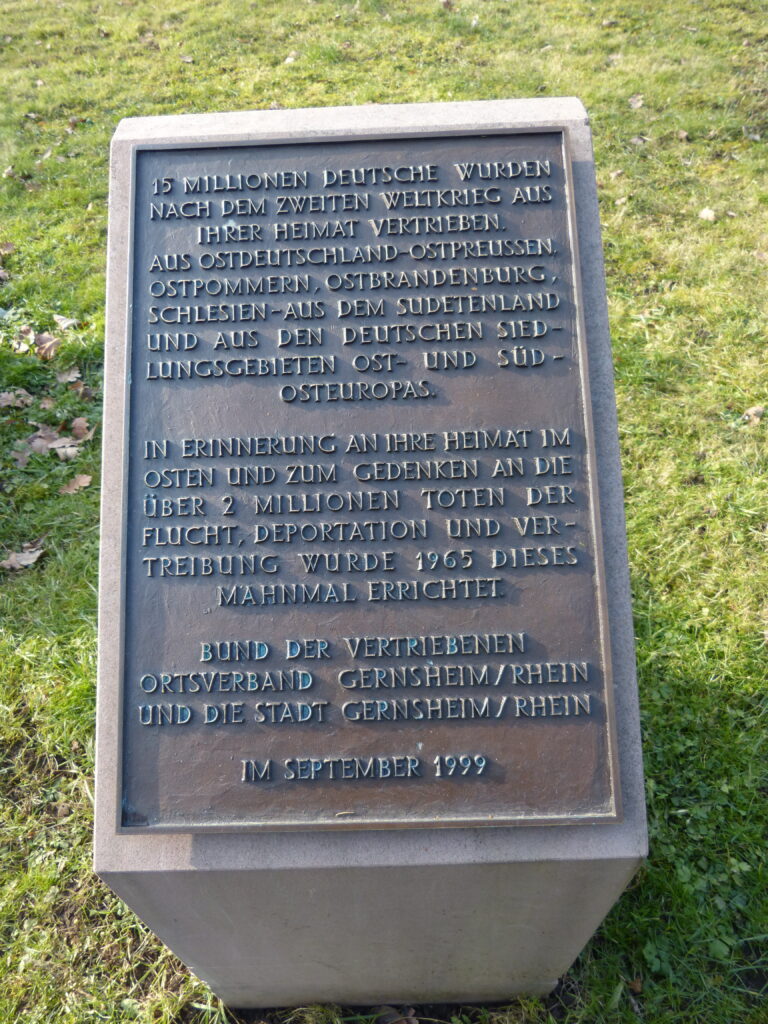
It’s in memory of the more than 15 million people who were displaced from their homelands, as well as the 2 million who died, during World War II.
This half-timbered house, now a restaurant, is locally famous for two reasons.
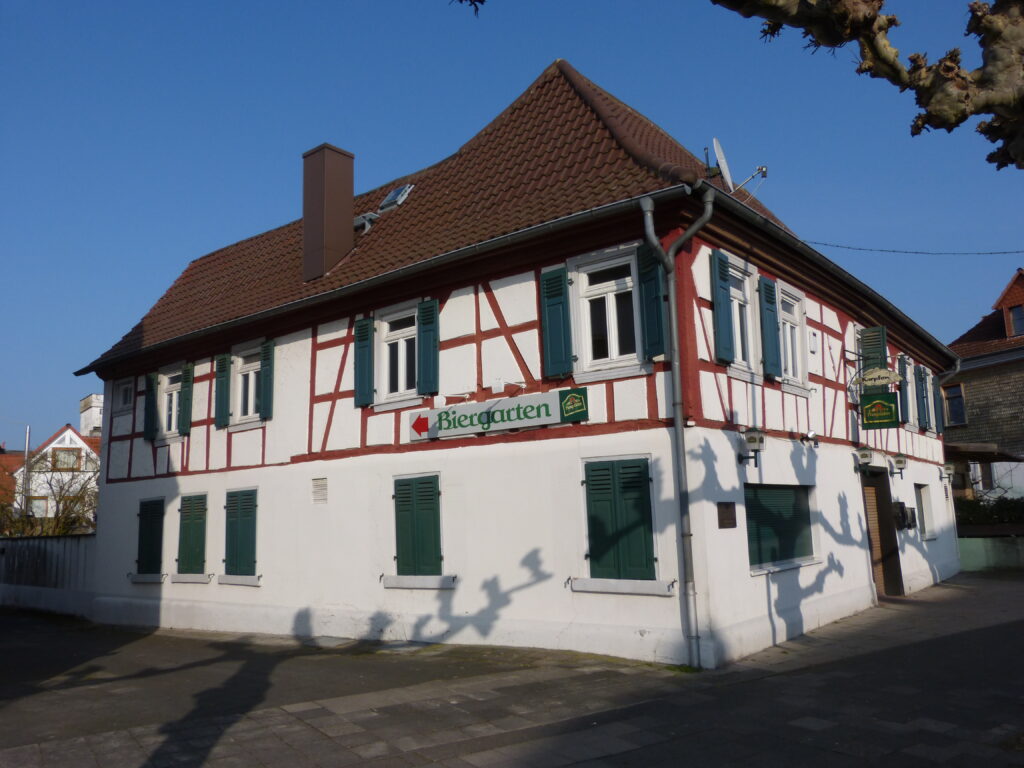
The first is that the composer Joseph Schmitt was born there in 1734. I’m not familiar with him but if you’re a fan of classical music then maybe you are.
And the second is that it’s the home of the Rhenish Fishing Festival – which, as everyone knows, has been the biggest fishing festival on the Rhine since 1948.
Gernsheim is very proud of the fact the Peter Schöffer was born there in the 15th century.
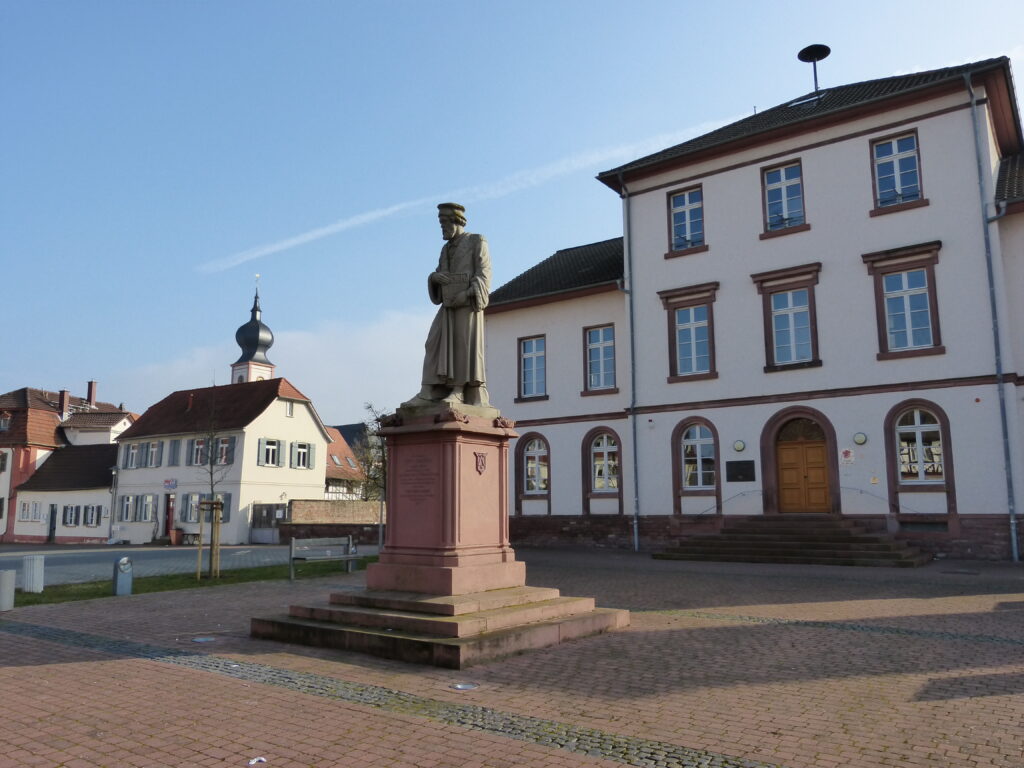
He was a printer who at one time was an apprentice to Johannes Gutenberg. He later formed his own firm with another partner and is credited with various printing innovations.
Schöfferplatz, the square where that statue is located, has some beautiful buildings.
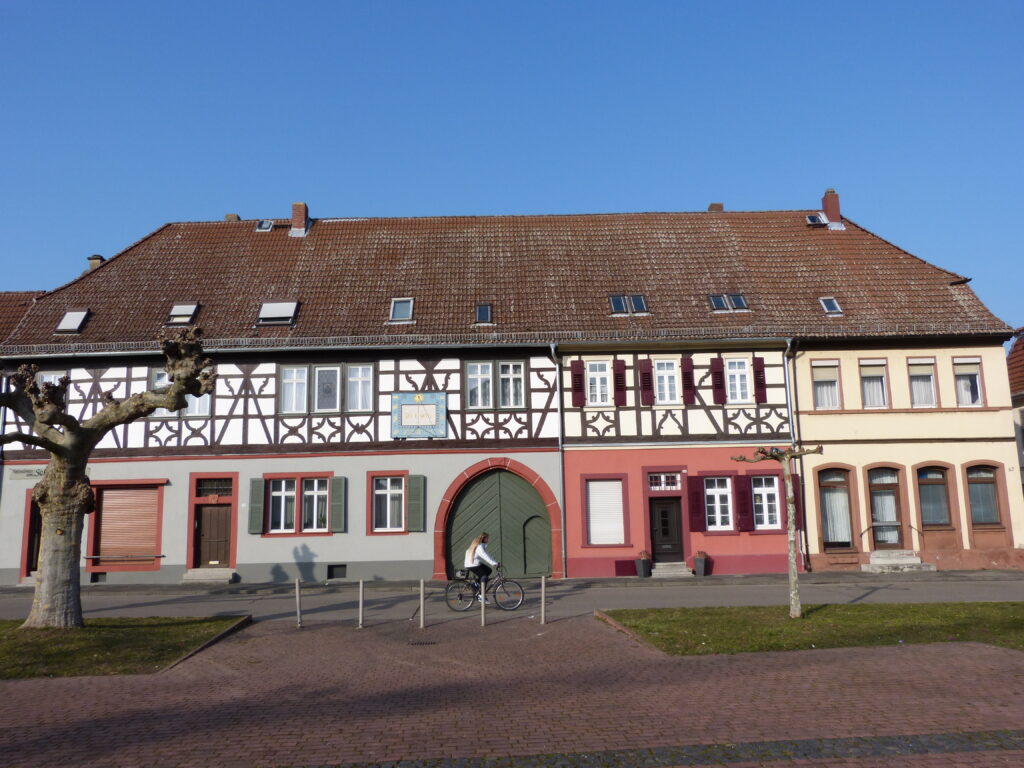
The sundial on the face of that one, just above the girl riding the bicycle, is from the 18th century.
Historians believe there probably used to be a moated castle where the Schöfferplatz is now.
The Church of St. Mary Magdalene was originally built between 1750 and 1753.
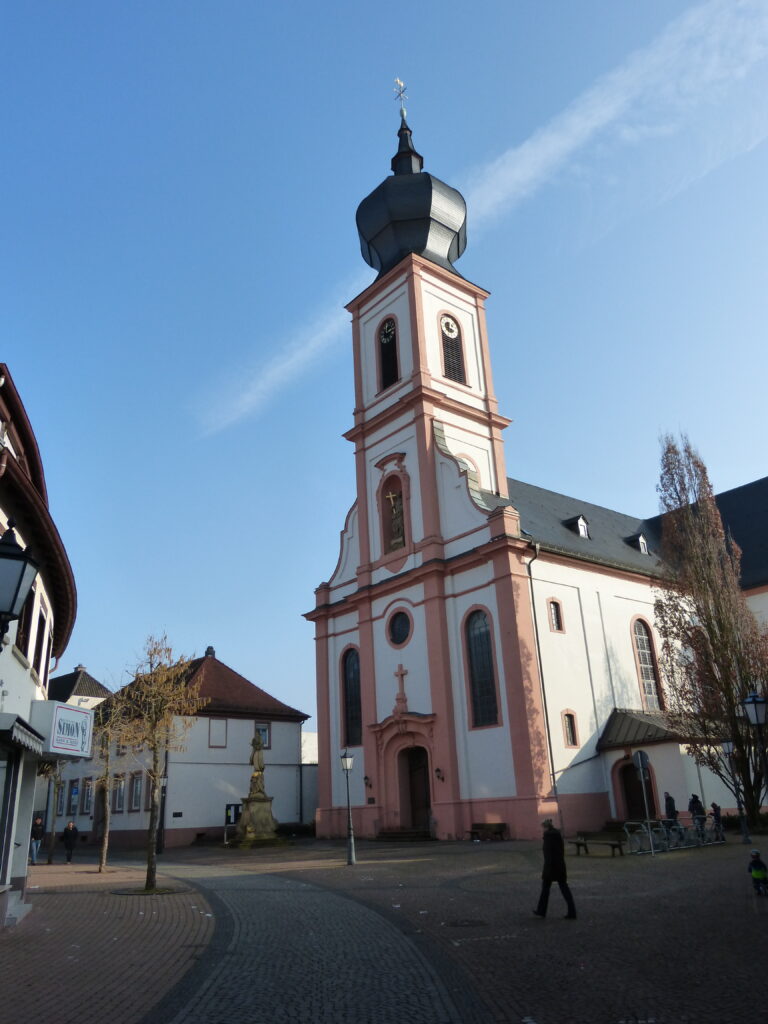
It was destroyed during World War II and rebuilt between 1948 and 1951.
As we continued roamin’ around, we came across this column.
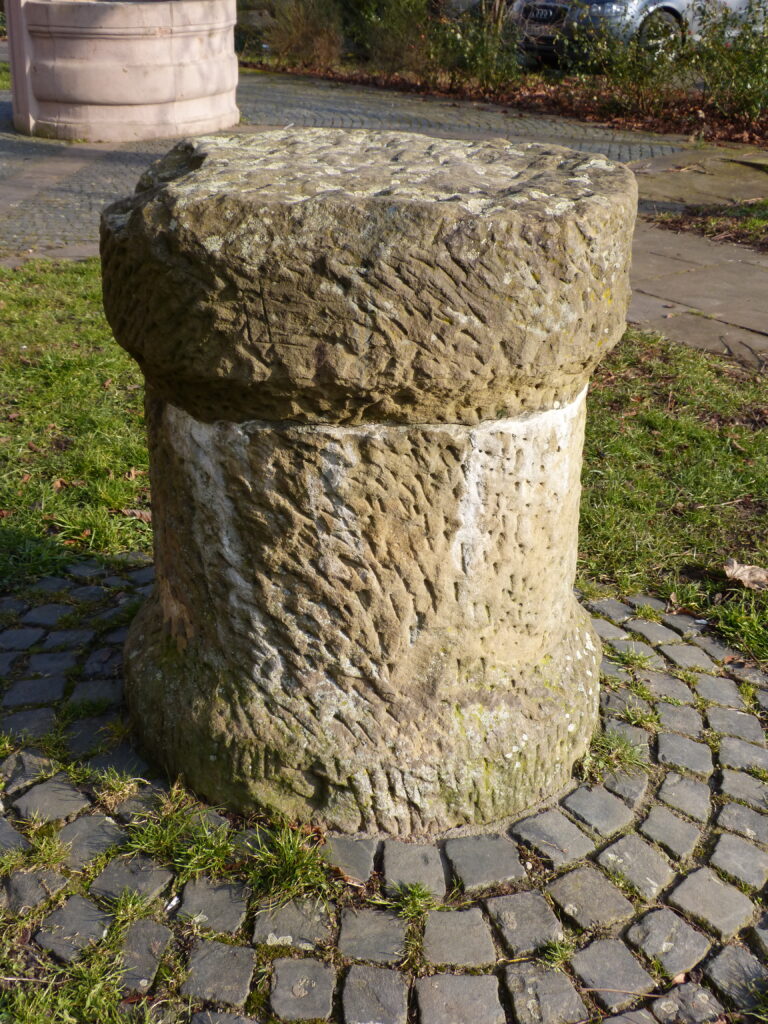
Yes, it’s Roman and dates from the end of the first century. It was unearthed in 1972.
I think it’s amazing that things like this are just sitting out in the open.
This fountain is from the year 1749.
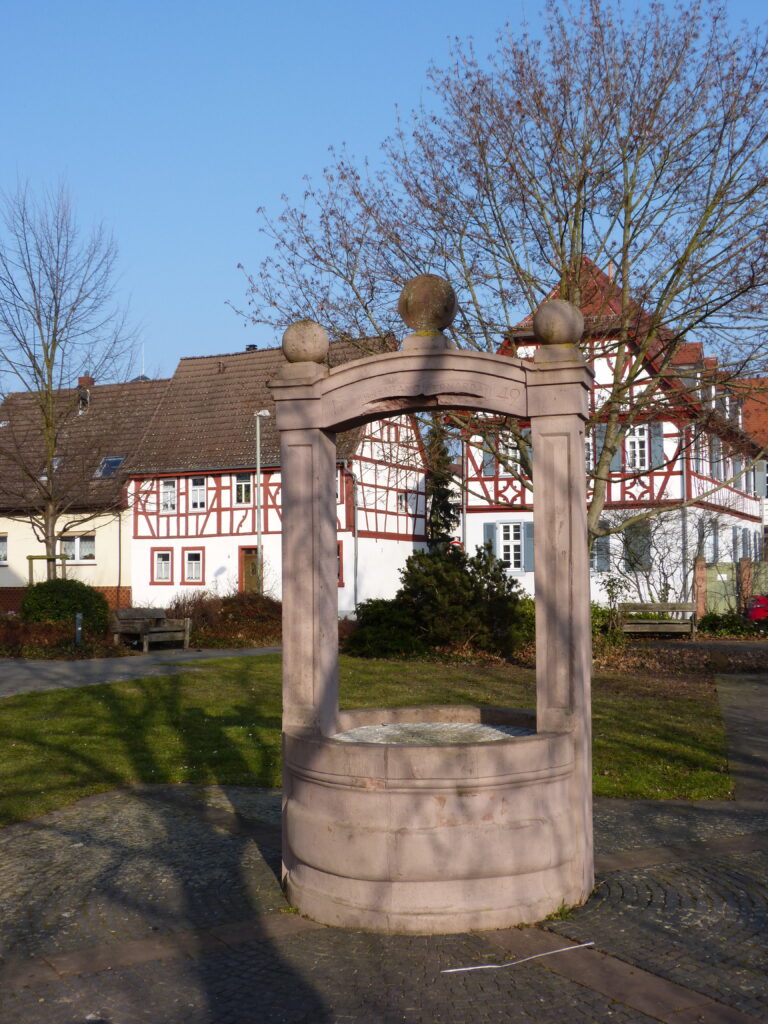
I like the half-timbered houses behind it, too.
And this monument is from 1676.
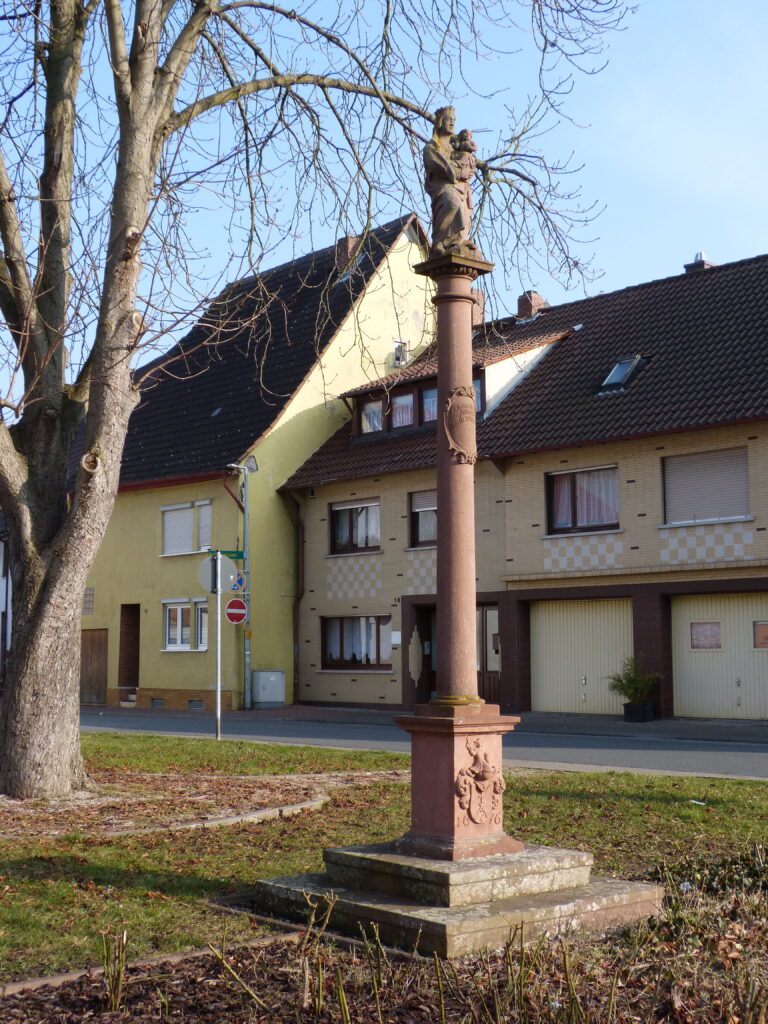
It commemorates the victims of the plague.
The oldest building in Gernsheim was built in 1701, so not quite as old as some other “oldest houses” we’ve seen.
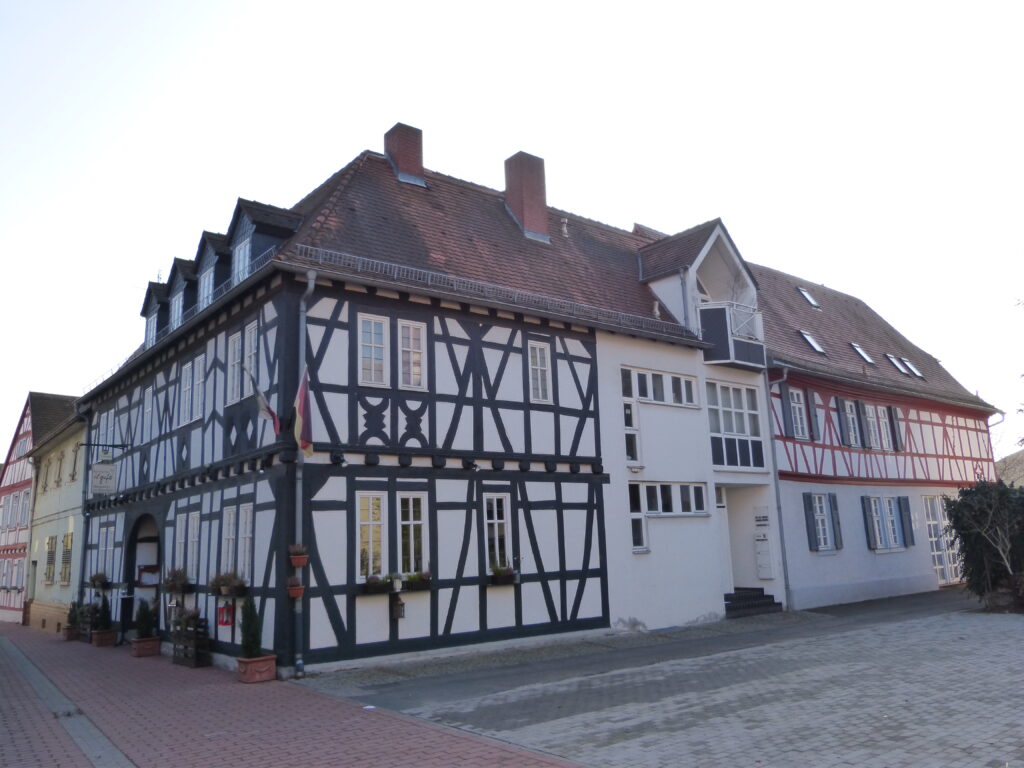
The reason is that in 1689, during the Palatinate War of Succession (also called the Nine Years’ War), the French sacked and burned down numerous villages along the Rhine.
Gernshei was one of them. The building shown above was the first one erected when they started to rebuild.
It now houses a restaurant.
Our next stop was the Gernsheimer cemetery, which was created in 1676 after the plague that you read about earlier.
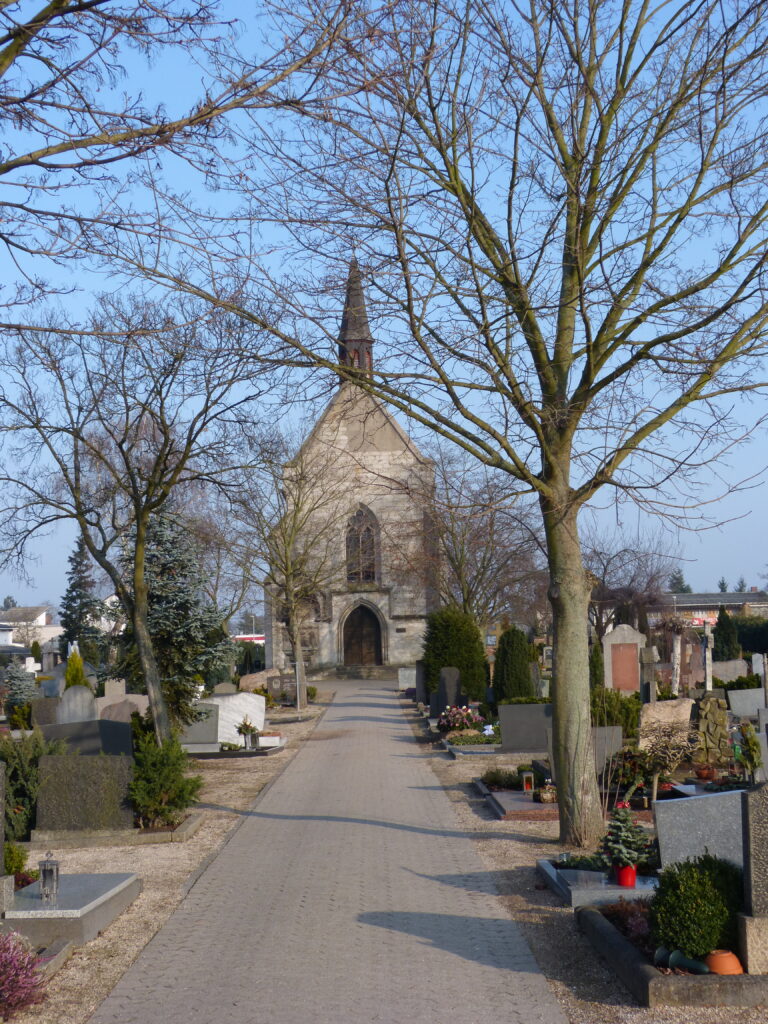
The chapel you see there was built in 1862.
Moving forward to more recent times, the Schiller School was built in 1911.
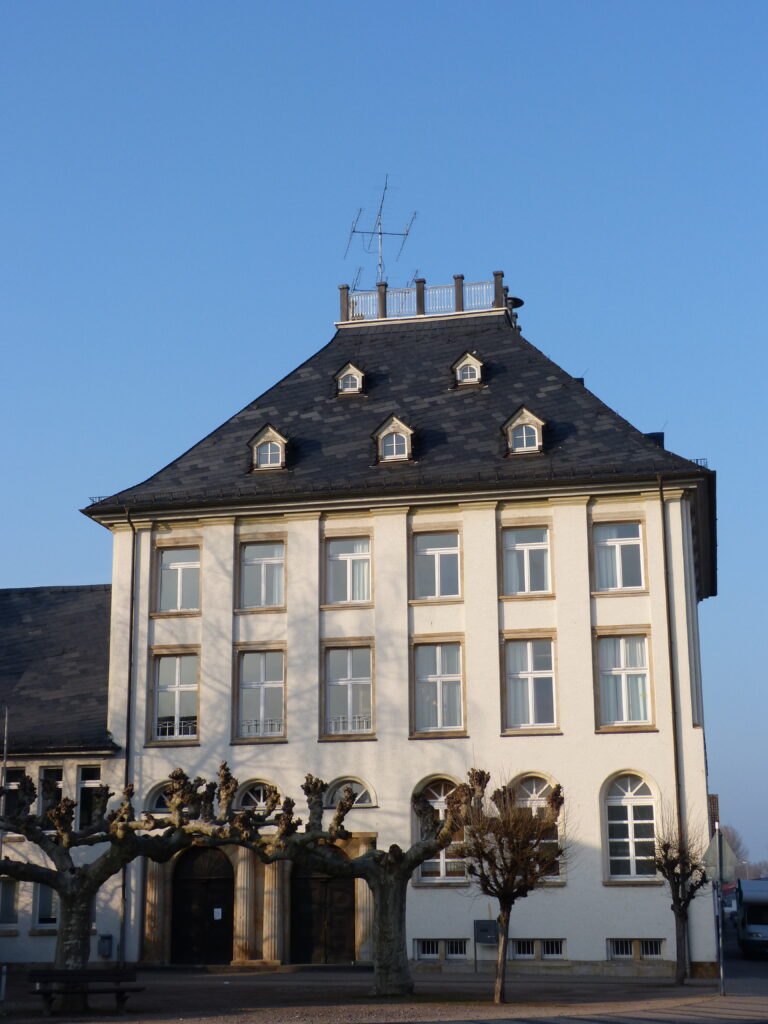
It was built in the Art Nouveau style and is still a school, now dedicated to children with learning disabilities.
Random side note – I love these little hobbit-sized trucks.
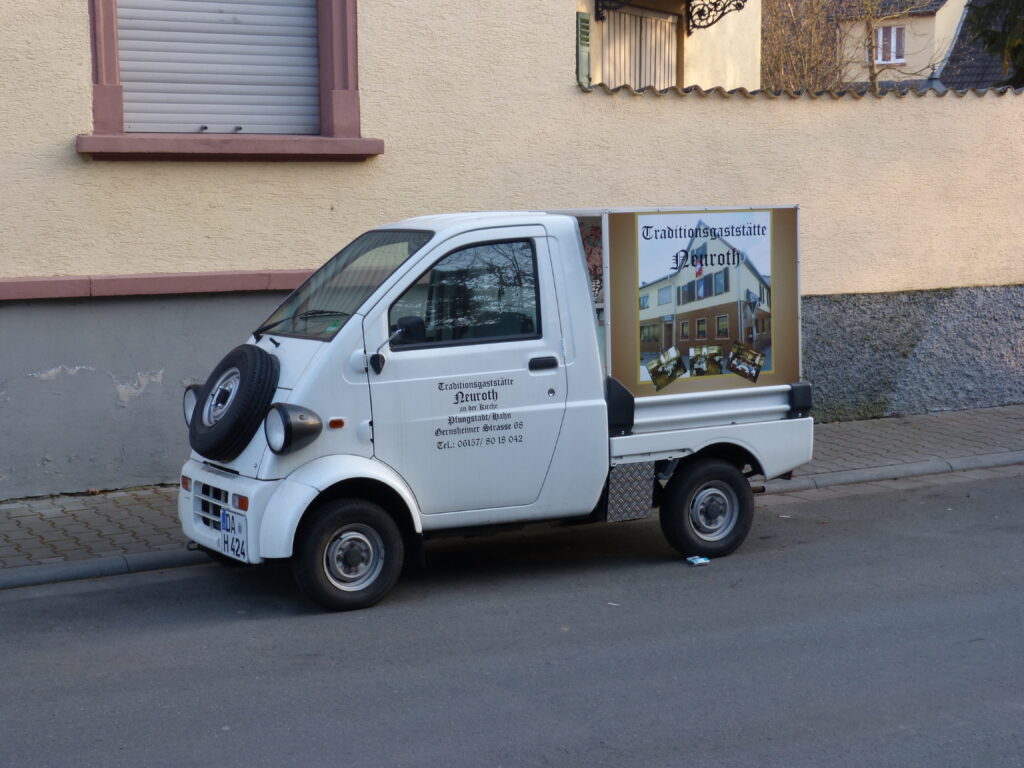
Heading back to the river near where we started our tour, we saw this boat which is called a schokker.
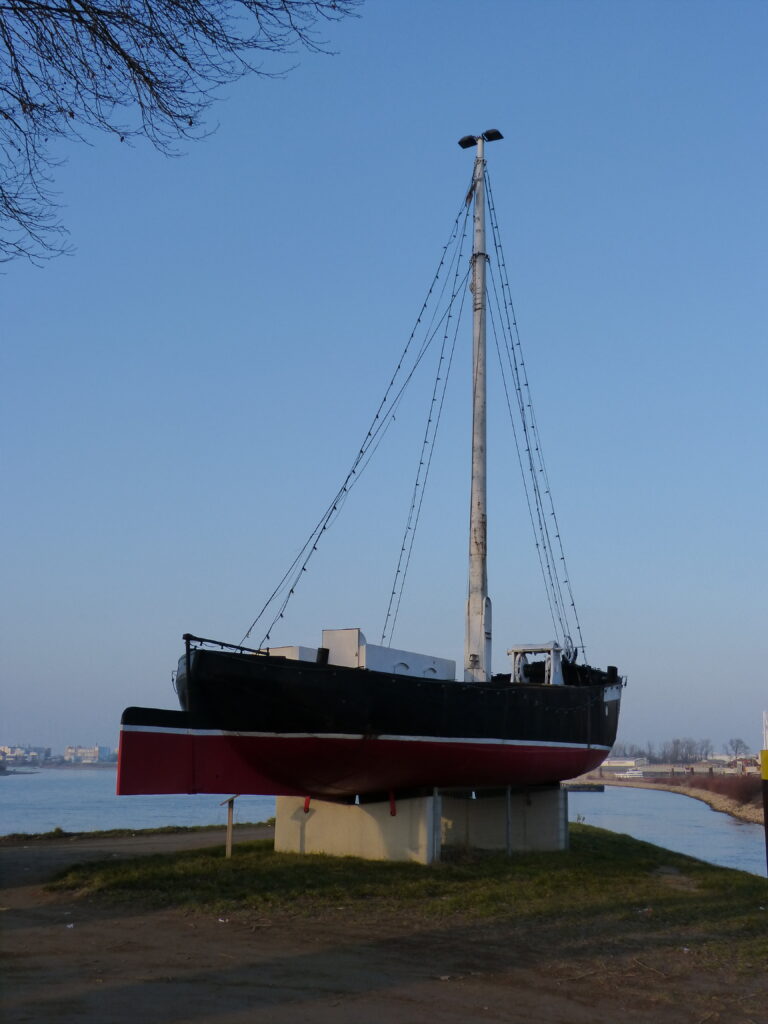
It was built in 1936.
Gernsheim at one time had the largest schokker fleet on the Rhine.
It’s a Dutch style of boat and in Gernsheim the boats were used mainly for eel fishing.
Sorry, but ew.
We left the town just as the sun was starting to set over the Rhine.
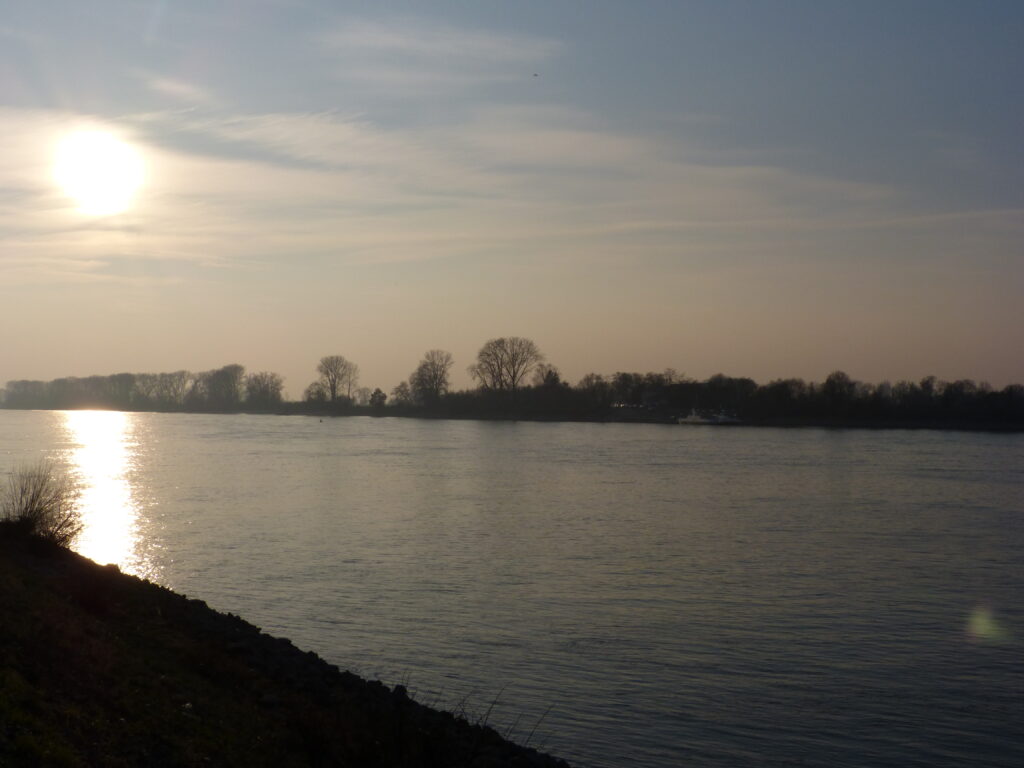
I love exploring towns along the Rhine and am always amazed at how much even the smallest towns have to offer in terms of history.

